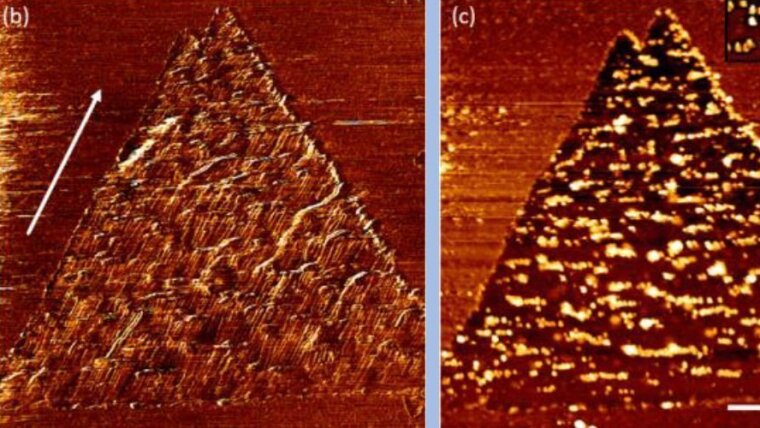
- Research
- Publication
Published:
Single crystal gold clusters (10 nm in size) have been collectively manipulated on mono- and bi-layered MoS2 islands (up to 20 µm) grown on SiO2 using AFM. On the monolayer the clusters tend to move in a direction corresponding to the zigzag alignment of the Mo and S atoms, and assemble into long striation patterns parallel to the scan direction. The distance between consecutive stripes is inversely proportional to the cluster concentration and size. A more detailed observation based on SEM shows that within each stripe the clusters remain separated by gaps of few nm in width possibly caused by electrostatic repulsion and/or the roughness of the SiO2 substrate (∼2 nm). The stripes also proved to be thermally stable, preserving their superstructures up to 823 K. On the bilayer gold clusters are much less prone to move and assemble into stripes. These results suggest that the formation of nanostructures resulting from collective manipulation of metal clusters can be oriented by a properly chosen scan path in a rather straightforward way (as compared to one-by-one displacement of single clusters). The goal of forming µm-long but nm-thin wires with a geometrically defined shape could be easily reached with the use of smoother substrates or TMD materials with lesser charge transfer to metals adsorbed on them.
Publication
Felix Trillitzsch, Arkadiusz Janas, Alper Özogul, Christof Neumann, Antony George, Benedykt R. Jany, Franciszek Krok, Andrey Turchanin, Enrico Gnecco: "Scanning-probe-induced assembling of gold striations on mono- and bi-layered MoS2 on SiO2", MRS Advances 5 (2020) 2201–2207, DOI: 10.1557/adv.2020.151External link